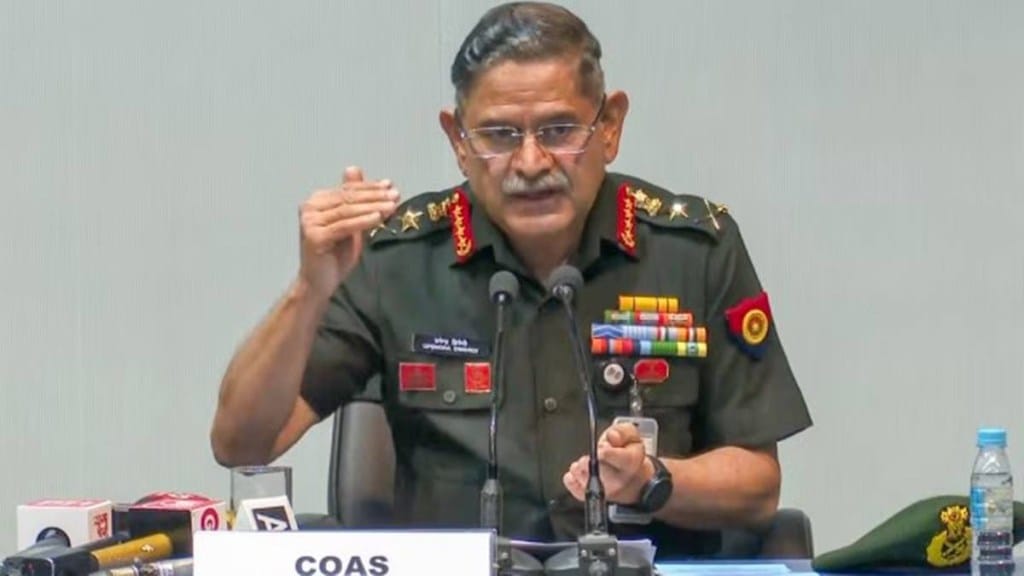India-Pakistan conflict: Army Chief General Upendra Dwivedi on Saturday shed new light on Operation Sindoor, India’s anti-terror action against Pakistan in May, describing it as a “game of chess in a grey zone” operation unlike any conventional warfare. Speaking at an event at IIT Madras in Chennai, Gen Dwivedi said the first meeting about the operation took place just a day after the Pahalgam terror attack of 22 April, which killed 26 people.
On 23 April, the three chiefs of the armed forces met Defence Minister Rajnath Singh, who told them, “Enough is enough,” making it clear that decisive action was required. According to Gen Dwivedi, the political leadership granted the military complete freedom to decide the course of the operation.
‘Playing chess’ in the grey zone
Gen Dwivedi symbolised the campaign as a game of chess, where each side is unsure of the other’s next move and must adapt dynamically. “In Operation Sindoor, we played chess. It means we did not know the next move the enemy was going to take or what we were going to do next. This is what we call a grey zone,” he explained.
He defined the grey zone as action “just short of a conventional operation”, neither full-scale war nor routine skirmish. “Somewhere we were giving them the checkmate and somewhere we were going in for the kill at the risk of losing our own, but that’s what life is all about,” he added.
VIDEO | Chennai: Chief of Army Staff (COAS) General Upendra Dwivedi, while addressing at IIT Madras, spoke about Operation Sindoor, saying, “On April 22, you are aware of what happened in Pahalgam, and it actually shocked the nation. April 23 is when, the very next day itself, we… pic.twitter.com/ckT9CvvfRl
— Press Trust of India (@PTI_News) August 10, 2025
India-Pakistan conflict
The Army Chief’s comments came hours after Air Chief Marshal Amar Preet Singh also spoke publicly about Operation Sindoor. Addressing an audience in Bengaluru, ACM Singh revealed that India shot down five Pakistani fighter jets and destroyed a large Airborne Early Warning and Control (AEW&C) aircraft during the four-day conflict.
He said these kills were achieved using the S-400 air defence system and emphasised that the Indian Air Force faced no operational restrictions during the mission. “We had complete freedom to plan and execute the mission,” he noted.
Targets in Pakistan and PoK
Operation Sindoor began on 7 May and focused on striking terrorist infrastructure in Pakistan and Pakistan-occupied Kashmir (PoK). The strikes came less than two weeks after the Pahalgam attack and were part of a coordinated, multi-branch response by the Army, Air Force, and Navy.
According to military leaders, the success of the operation lay in its flexibility and unpredictability. By operating in the grey zone, Indian forces were able to keep Pakistan off balance, applying both psychological and tactical pressure.
Gen Dwivedi praised the clarity and confidence provided by political leaders during the planning stages. “That is the kind of confidence, political direction and political clarity we saw for the first time… That is what raises your morale. That is how it helped our army commander-in-chiefs to be on the ground and act as per their wisdom,” he said.
Mocking Pakistan, Gen Dwivedi said, “If you ask a Pakistani whether you lost or won, he will say my chief (Asim Munir) has become Field Marshal so we must have won only.”

